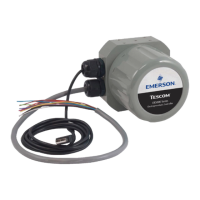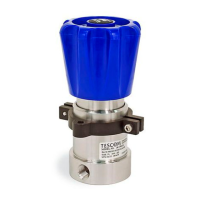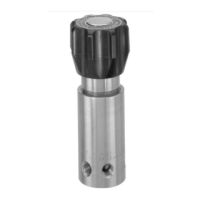ER5000 —
35
How It Works
Tuning a PID Controller
Tuning a controller is the process of selecting the optimal
Kp, Ki and Kd settings to yield the best response. The “best”
response depends on what is most important for the application
and usually entails a compromise between speed of response
and stability.
Your ER5000 is pre-tuned at the factory and a default PID setting
congured by TESCOM™ to match your TESCOM regulator can
be downloaded to the controller during setup. For many users,
the default tuning will provide effective system control right
out of the box. Others will nd that the specic requirements
of their application or operating environment call for some
additional manual tuning, using the ERTune
™
program, to achieve
optimal performance.
The mathematics of PID algorithms are complex and beyond the
scope of this manual. Understanding the response characteristics of
your system will inevitably involve trial and error.
Nonetheless, PID tuning can also be understood in basic functional
terms. There are predictable effects, both positive and negative,
to watch for as settings are increased or decreased. If necessary,
default settings can be restored with the click of a button (see To
reset the ER5000 to its default PID settings).
Using a few rules of thumb and the real-time visual feedback
provided by the ERTune
™
program, all operators, regardless of
experience, can achieve positive results through manual tuning of
their controllers.
Rules of Thumb for PID Tuning
• The Proportional setting controls the overall response curve
of the controller. It is set rst. Integral and Derivative are
added to ne tune the response.
• The Integral setting accelerates the response, particularly
as the system approaches setpoint and the Proportional
decreases. It is primarily used to minimize a condition known
as Steady State Error or Offset, where the system settles into
a stable state without reaching the targeted setpoint. The
Integral also remains “charged up” with Integral windup after
an error has been corrected.
• The Derivative setting dampens the response and is used to
prevent the system from overcorrecting. Generally set next
after Proportional.

